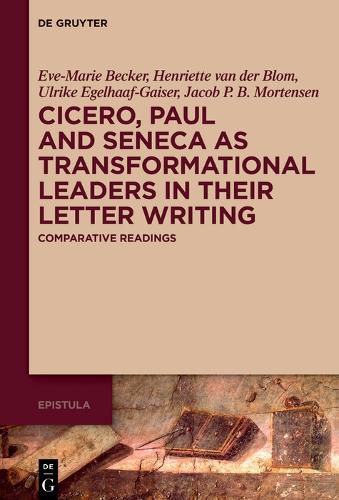Readings Newsletter
Become a Readings Member to make your shopping experience even easier.
Sign in or sign up for free!
You’re not far away from qualifying for FREE standard shipping within Australia
You’ve qualified for FREE standard shipping within Australia
The cart is loading…






This commentary offers the reader a set of letters (or letter parts) written by Cicero, Paul, and Seneca, which have been selected against the Transformational Leadership categories of 'idealised influence', 'inspirational motivation', 'intellectual stimulation', and 'individualised consideration'. Chapter 1 offers introduction into authors and theory: all three letter writers are considered as ancient leadership figures composing leadership letters. The letters selected are presented in original text facing a translation (Chapter 2). Chapter 3 provides analysis and discussion of each letter, and aims to introduce the reader to the historical and literary contexts before reading the letter through the lenses of Transformational Leadership theory. Chapter 4 sums up the findings on each letter and each letter writer in light of Transformational Leadership and its categories. The volume is aimed at all those who are studying the function of ancient letter-writing - especially the letters of Cicero, Paul, or Seneca.
$9.00 standard shipping within Australia
FREE standard shipping within Australia for orders over $100.00
Express & International shipping calculated at checkout
This commentary offers the reader a set of letters (or letter parts) written by Cicero, Paul, and Seneca, which have been selected against the Transformational Leadership categories of 'idealised influence', 'inspirational motivation', 'intellectual stimulation', and 'individualised consideration'. Chapter 1 offers introduction into authors and theory: all three letter writers are considered as ancient leadership figures composing leadership letters. The letters selected are presented in original text facing a translation (Chapter 2). Chapter 3 provides analysis and discussion of each letter, and aims to introduce the reader to the historical and literary contexts before reading the letter through the lenses of Transformational Leadership theory. Chapter 4 sums up the findings on each letter and each letter writer in light of Transformational Leadership and its categories. The volume is aimed at all those who are studying the function of ancient letter-writing - especially the letters of Cicero, Paul, or Seneca.